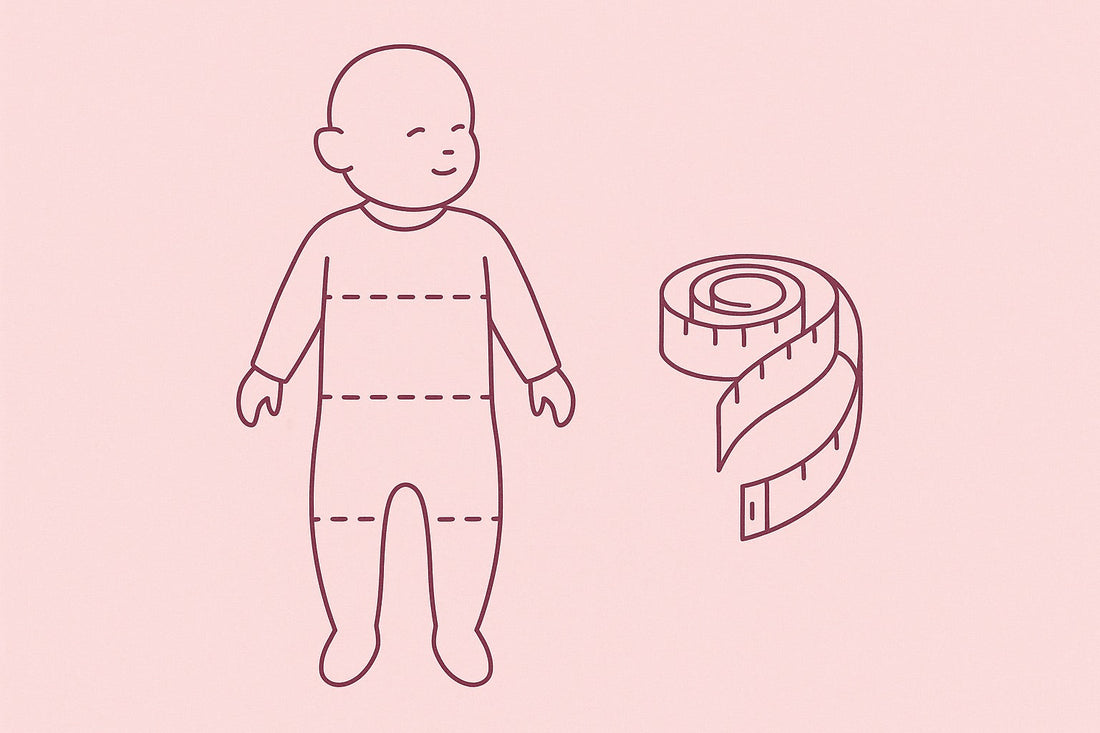
CYC Standard Baby Measurements (0–18 months): Knitting Sizes and Allowances
Share
Check out the Craft Yarn Council's (CYC) standard baby body measurements . We've included centimeter charts for 0–3 m, 3–6 m, 6–12 m, and 12–18 m , along with ease recommendations and practical tips to keep your garments comfortable and grow with you.
Table of Contents
How to use these tables
CYC charts are body measurements (not finished garment measurements). To calculate the final pattern size, you must add the appropriate allowance . For babies, it's important to prioritize comfort , ease of donning , and growth allowance .
CYC Baby Measurement Chart (0–18 months)
Guideline body measurements in cm for baby clothes. The values are typical ranges used in the CYC standard.
| Age | Chest (cm) | Waist (cm) | Hip (cm) | Center back neck–wrist (cm) | Waist-back length (cm) | Armhole depth (cm) | Head circumference (cm) |
|---|---|---|---|---|---|---|---|
| 0–3 months | 43 | 43 | 43 | 27 | 14 | 9 | 36–40 |
| 3–6 months | 45.5 | 45.5 | 46 | 29 | 16 | 10 | 40–43 |
| 6–12 months | 48 | 48 | 48.5 | 32 | 17.5 | 11 | 44–46 |
| 12–18 months | 50.5 | 50.5 | 51 | 34 | 19 | 12 | 47–49 |
Guideline source: Craft Yarn Council (CYC) — Baby Size Chart (cm). Remember to add allowance for the finished garment.
Recommended clearances for baby
Baby clothes require generous slack to be comfortable and easy to put on/take off:
| Type of garment | Chest/Head clearance | Grades |
|---|---|---|
| Lightweight sweater/jacket | 4–8 cm | For everyday use, prioritize a wide neckline or opening. |
| Knitted sweatshirt/coat | 8–12 cm | Allows for underlayers without squeezing. |
| Rompers/overalls | 4–8 cm | Evaluate the diaper; add ease to the hip/waist. |
| Hats | -1 to 0 cm | Slight negative ease to prevent sagging; adjust according to elasticity. |
Ease is added to the body measurement (except for hats, which usually have a slight negative ease ).
Adjustment and growth tips
- Easy openings: Use buttons/snaps on the shoulder or front for effortless dressing.
- Sleeves and lengths: leave foldable cuffs and hems with room to accommodate growth.
- Soft fibers: prioritizes skin-friendly materials (soft merino, combed cotton) and flat seams.
- Blocking and washing: pre-wash the ball if it is prone to shrinkage; always follow the label.
Frequently Asked Questions
Should I choose by age or actual measurement?
Age is a guideline. Prioritize chest circumference and adjust lengths according to the baby's size. If in doubt, go up a size.
How much slack do I add for outerwear?
Between 8–12 cm above the chest. Adjust according to the thickness of the fabric and the layers you'll be wearing underneath.
How loose are baby hats?
Typically a slight negative ease (−1 to 0 cm) to keep them in place; this depends on the elasticity of the knit.
Related articles
- Complete guide: Standard measurements by size (CYC): women, men, children and babies
- CYC Standard Measurements for Women
- CYC Standard Men's Measurements
- CYC Standard Measurements for Children
- How much wool do I need for my size?
- See all the balls at Idealium →
Main source: Craft Yarn Council (CYC) — Standard Body Measurements (Baby) . Guidance values.
Soft, easy and safe clothes for your baby
Choose skeins that are gentle on the skin and knit with the ideal looseness. Get inspired by our collection.
See balls of yarn